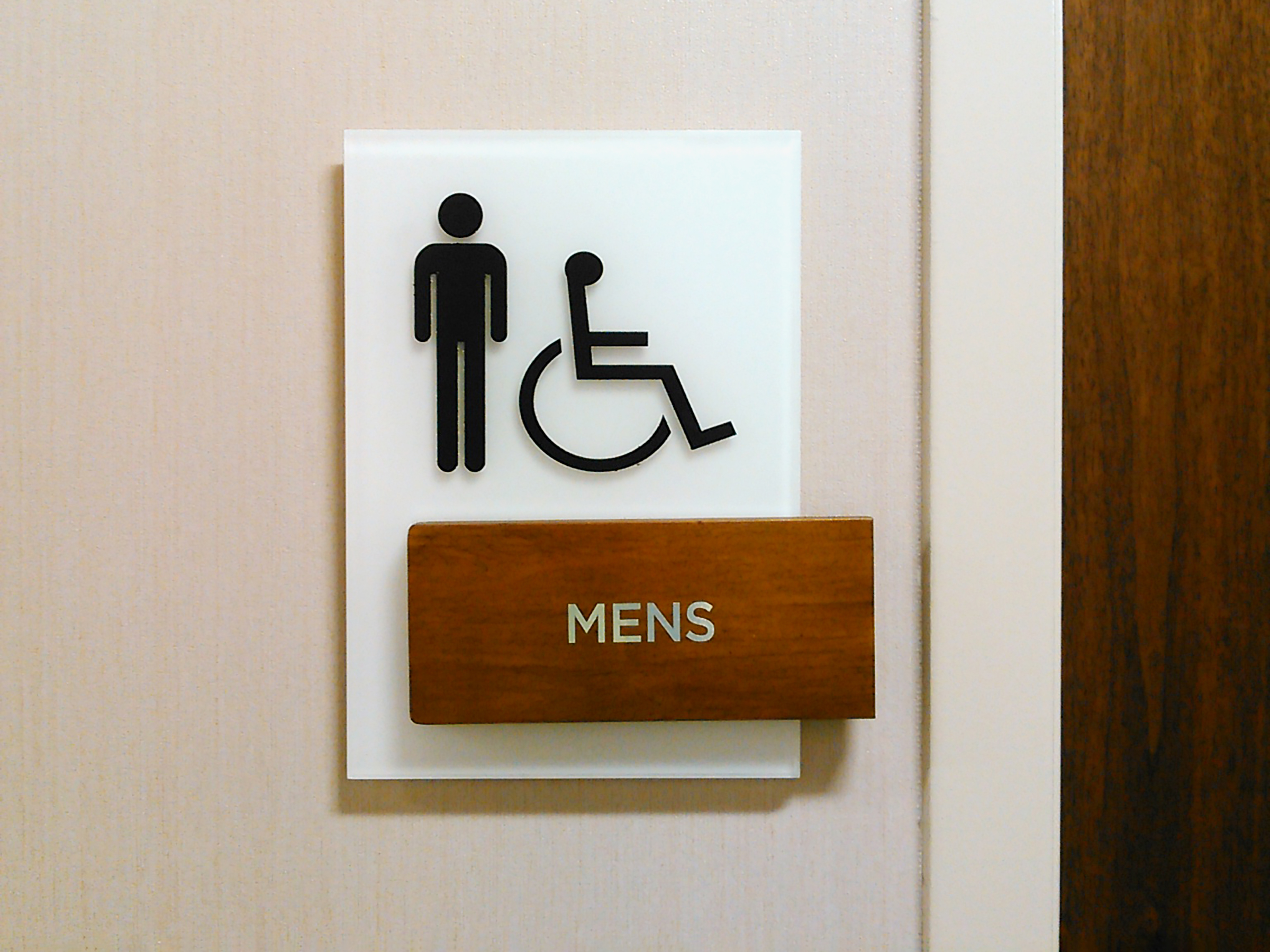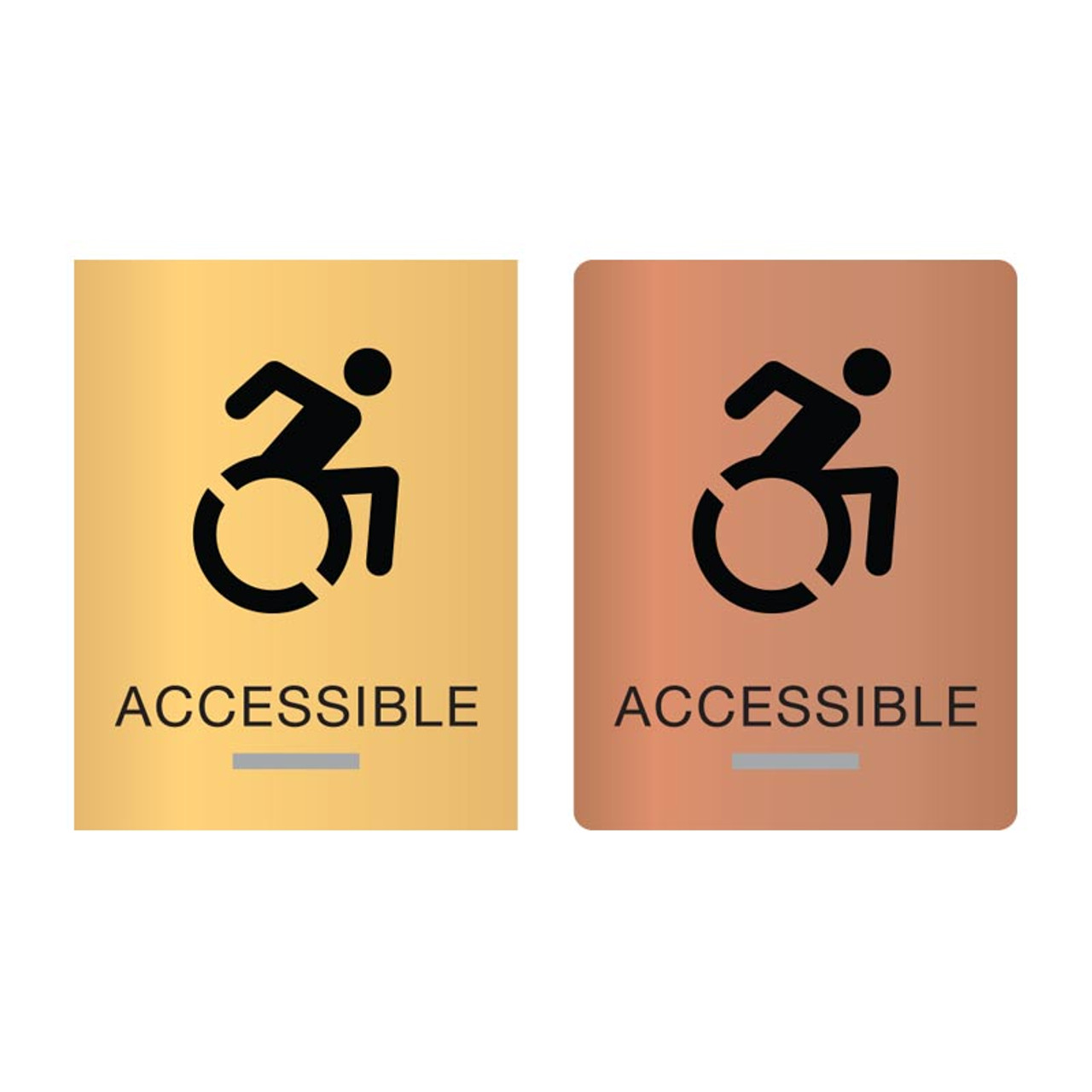Comprehending the Regulations Behind ADA Signs
Comprehending the Regulations Behind ADA Signs
Blog Article
Discovering the Trick Features of ADA Signs for Enhanced Availability
In the realm of availability, ADA signs offer as quiet yet effective allies, making certain that rooms are inclusive and navigable for individuals with specials needs. By incorporating Braille and responsive aspects, these indicators damage obstacles for the aesthetically impaired, while high-contrast color plans and legible typefaces provide to diverse visual demands.
Importance of ADA Conformity
Guaranteeing conformity with the Americans with Disabilities Act (ADA) is vital for fostering inclusivity and equal accessibility in public spaces and offices. The ADA, passed in 1990, mandates that all public facilities, companies, and transportation solutions suit individuals with specials needs, ensuring they take pleasure in the same legal rights and opportunities as others. Compliance with ADA standards not just satisfies legal responsibilities yet additionally boosts an organization's track record by showing its dedication to diversity and inclusivity.
One of the crucial elements of ADA conformity is the execution of available signs. ADA signs are designed to guarantee that individuals with impairments can quickly navigate through spaces and buildings. These signs should comply with particular guidelines relating to dimension, typeface, color contrast, and positioning to assure presence and readability for all. Properly implemented ADA signage aids remove barriers that people with disabilities frequently encounter, thereby advertising their freedom and confidence (ADA Signs).
Moreover, adhering to ADA laws can reduce the threat of prospective fines and lawful consequences. Organizations that fail to comply with ADA standards may encounter legal actions or charges, which can be both monetarily challenging and harmful to their public image. Hence, ADA compliance is important to fostering a fair environment for everybody.
Braille and Tactile Components
The unification of Braille and tactile aspects right into ADA signage personifies the principles of access and inclusivity. These features are critical for individuals that are aesthetically damaged or blind, enabling them to browse public spaces with higher independence and self-confidence. Braille, a tactile writing system, is crucial in offering created info in a format that can be quickly regarded through touch. It is commonly put beneath the matching message on signage to make certain that individuals can access the information without visual assistance.
Responsive components extend past Braille and consist of elevated symbols and characters. These components are developed to be discernible by touch, enabling individuals to recognize area numbers, washrooms, departures, and other critical areas. The ADA establishes certain guidelines concerning the size, spacing, and positioning of these responsive aspects to optimize readability and ensure uniformity throughout different environments.

High-Contrast Color Pattern
High-contrast color systems play a crucial duty in boosting the presence and readability of ADA signs for people with visual disabilities. These systems are crucial as they take full advantage of the distinction in light reflectance between text and background, making sure that indicators are easily discernible, also from a range. The Americans with Disabilities Act (ADA) mandates making use of specific shade contrasts to fit those with minimal vision, making it a crucial aspect of compliance.
The efficiency of high-contrast shades exists in their ability to stand apart in numerous illumination problems, including dimly lit environments and locations with glow. Normally, dark message on a light background or light text on a dark history is employed to accomplish optimum contrast. For instance, black message on a white or yellow background gives a stark visual distinction that assists in quick recognition and understanding.

Legible Fonts and Text Dimension
When thinking about the style of ADA signs, the choice of readable font styles and appropriate text dimension can not be overstated. The Americans with Disabilities Act (ADA) mandates that typefaces need to be not italic and sans-serif, oblique, manuscript, very attractive, or of uncommon type.
The size of the text additionally plays a crucial duty in availability. According to ADA guidelines, the minimum message elevation ought to be 5/8 inch, and it should increase proportionally with watching distance. This is especially vital in public areas where signage needs to be reviewed swiftly and accurately. Uniformity in message size adds to a cohesive aesthetic experience, helping individuals in browsing atmospheres efficiently.
Furthermore, spacing in between letters and lines is indispensable to clarity. Sufficient spacing protects against Homepage personalities from showing up crowded, improving readability. By sticking to these standards, developers can considerably boost ease of access, making certain that signage offers its intended function for all people, no matter their visual capacities.
Efficient Placement Methods
Strategic placement of ADA signage is essential for maximizing access and ensuring compliance with lawful standards. Appropriately located signs direct people with handicaps effectively, assisting in navigating in public rooms. Key considerations include presence, closeness, and elevation. ADA guidelines stipulate that signs ought to be installed at an elevation in between 48 to 60 inches from the ground to guarantee they are within the line of view for both standing and seated people. This standard height range is crucial for inclusivity, allowing wheelchair individuals and individuals of varying heights her response to gain access to info effortlessly.
Additionally, indications should be placed surrounding to the latch side of doors to permit simple identification prior to entry. Uniformity in sign positioning throughout a facility boosts predictability, decreasing complication and enhancing total individual experience.

Final Thought
ADA signs play a crucial function in promoting availability by incorporating functions that deal with the requirements of individuals with impairments. These elements collectively foster a comprehensive setting, emphasizing the value of ADA compliance in guaranteeing equal access for all.
In the world of access, ADA indicators serve as silent yet effective allies, making certain that rooms are accessible and inclusive for individuals with handicaps. The ADA, established in 1990, mandates that all public facilities, employers, and transport solutions fit individuals with handicaps, guaranteeing they take pleasure in the same rights and possibilities as others. ADA Signs. ADA indications are developed to guarantee that individuals with handicaps can quickly navigate via structures and areas. ADA guidelines stipulate that indicators ought to be mounted at an elevation between 48 to 60 inches from Home Page the ground to guarantee they are within the line of view for both standing and seated individuals.ADA signs play a crucial role in advertising ease of access by integrating attributes that deal with the demands of individuals with handicaps
Report this page